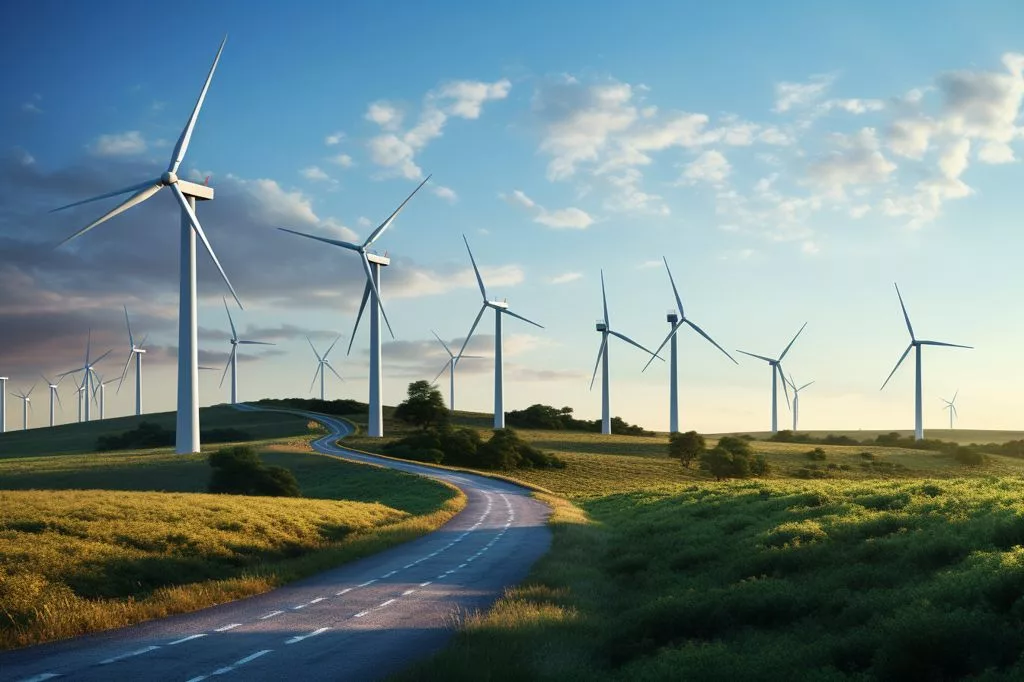South Africa’s Energy Action Plan is a government-led initiative aimed at ensuring reliable and affordable electricity for all citizens. The plan includes strategies such as energy efficiency, diversification of energy sources, grid modernization, increasing power generation capacity, and rural electrification. While progress has been made, challenges such as insufficient funding, regulatory bottlenecks, and persistent electricity theft still exist. To overcome these challenges, the government must prioritize investments, streamline regulatory processes, and promote public awareness of clean and renewable energy.
Dr. Kgosientsho Ramokgopa, South Africa’s Minister in The Presidency responsible for Electricity, recently shared updates on the nation’s progress in executing its Energy Action Plan. This article explores the main points from the briefing, elucidating the country’s initiatives, challenges, and achievements in striving for a sustainable energy future.
I. Overview of the Energy Action Plan
The Energy Action Plan is a government-led initiative aimed at tackling South Africa’s energy challenges and ensuring the delivery of reliable and affordable electricity for all citizens. The plan comprises various strategies and policies intended to foster energy efficiency, augment generation capacity, diversify the energy mix, and curb greenhouse gas emissions.
II. Essential Elements of the Energy Action Plan
1. Energy Efficiency
A primary goal of the plan is to encourage energy efficiency across multiple sectors, such as residential, commercial, and industrial. By implementing energy-saving technologies and practices, South Africa intends to significantly decrease its energy consumption, thereby alleviating the strain on its power generation capacity.
2. Diversification of Energy Sources
Another crucial aspect of the plan is expanding South Africa’s energy mix by integrating renewable energy sources like solar, wind, and hydro power. This not only helps lessen the country’s reliance on fossil fuels but also minimizes the environmental impact of power generation.
3. Grid Modernization
Revamping and extending the electricity grid is a fundamental component of the plan. This involves investing in smart grid technologies, enhancing the transmission and distribution infrastructure, and ensuring better integration of renewable energy sources into the grid.
4. Increasing Power Generation Capacity
The plan also emphasizes boosting South Africa’s power generation capacity to satisfy the growing demand for electricity. This is being accomplished through the construction of new power plants, including renewable energy projects, and the revitalization of existing ones.
5. Rural Electrification
The Energy Action Plan seeks to close the electricity access gap in rural areas by extending the grid and fostering the use of off-grid solutions, such as solar home systems and mini-grids.
III. Progress Report on the Energy Action Plan
During his recent media briefing, Dr. Kgosientsho Ramokgopa underscored several milestones achieved in the implementation of the Energy Action Plan. These include:
-
Substantial enhancements in energy efficiency, with the industrial sector witnessing a significant reduction in energy consumption through the implementation of energy-saving measures.
-
An increase in the share of renewable energy in the country’s energy mix, with several solar and wind power projects now in operation.
-
The ongoing upgrade of the electricity grid, which has enabled the integration of renewable energy sources and improved the overall reliability of the power supply.
-
Progress in augmenting power generation capacity, with various new power plants under construction and existing ones undergoing revitalization.
-
Steadfast advancement in rural electrification, with thousands of households in remote areas now connected to the grid or utilizing off-grid solutions.
IV. Challenges and the Path Forward
Despite the progress achieved thus far, South Africa still encounters numerous challenges in implementing its Energy Action Plan. These include:
-
Insufficient funding for critical infrastructure projects, such as grid modernization and power plant construction.
-
Regulatory and policy bottlenecks that impede the swift deployment of renewable energy projects.
-
Persistent electricity theft and vandalism, which compromise the efficiency and reliability of the power supply.
-
Slow progress in electrifying rural areas, with a considerable number of households still lacking access to electricity.
To surmount these challenges, the government must continue to prioritize investments in the energy sector, streamline regulatory processes, and nurture public-private partnerships. Additionally, concerted efforts must be made to raise public awareness about the importance of energy efficiency and the adoption of renewable energy technologies.
In conclusion, South Africa’s Energy Action Plan represents a critical step towards a sustainable energy future for the nation. While progress has been made, there is still much work to be done. Ongoing efforts to implement the plan, address challenges, and promote clean, reliable, and affordable electricity for all citizens remain of utmost importance.
1. What is South Africa’s Energy Action Plan?
South Africa’s Energy Action Plan is a government-led initiative aimed at ensuring reliable and affordable electricity for all citizens, which includes strategies such as energy efficiency, diversification of energy sources, grid modernization, increasing power generation capacity, and rural electrification.
2. What are the essential elements of the Energy Action Plan?
The essential elements of the Energy Action Plan are energy efficiency, diversification of energy sources, grid modernization, increasing power generation capacity, and rural electrification.
3. How does South Africa plan to encourage energy efficiency?
South Africa plans to encourage energy efficiency across multiple sectors, such as residential, commercial, and industrial, by implementing energy-saving technologies and practices.
4. How does South Africa plan to diversify its energy sources?
South Africa plans to diversify its energy sources by integrating renewable energy sources like solar, wind, and hydro power.
5. What is grid modernization, and why is it important for South Africa?
Grid modernization involves investing in smart grid technologies, enhancing the transmission and distribution infrastructure, and ensuring better integration of renewable energy sources into the grid. It is important for South Africa because it can improve the overall reliability of the power supply and enable the integration of renewable energy sources.
6. What progress has been made in implementing the Energy Action Plan?
South Africa has made substantial enhancements in energy efficiency, increased the share of renewable energy in the country’s energy mix, upgraded the electricity grid, augmented power generation capacity, and made steadfast advancement in rural electrification.
7. What are the challenges in implementing the Energy Action Plan?
The challenges in implementing the Energy Action Plan include insufficient funding for critical infrastructure projects, regulatory and policy bottlenecks, persistent electricity theft and vandalism, and slow progress in electrifying rural areas.
8. How can South Africa surmount these challenges?
To surmount these challenges, the government must continue to prioritize investments in the energy sector, streamline regulatory processes, and nurture public-private partnerships. Additionally, concerted efforts must be made to raise public awareness about the importance of energy efficiency and the adoption of renewable energy technologies.








